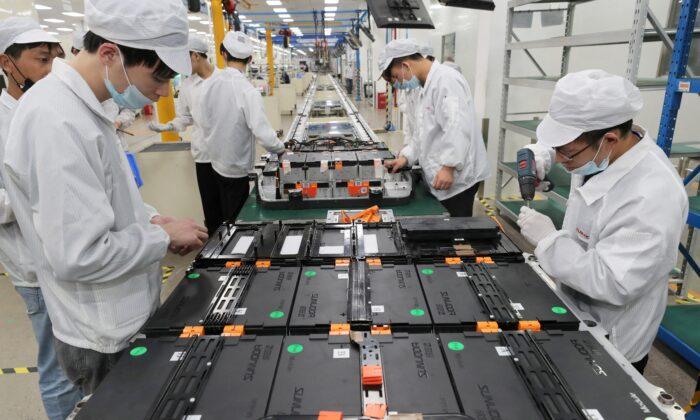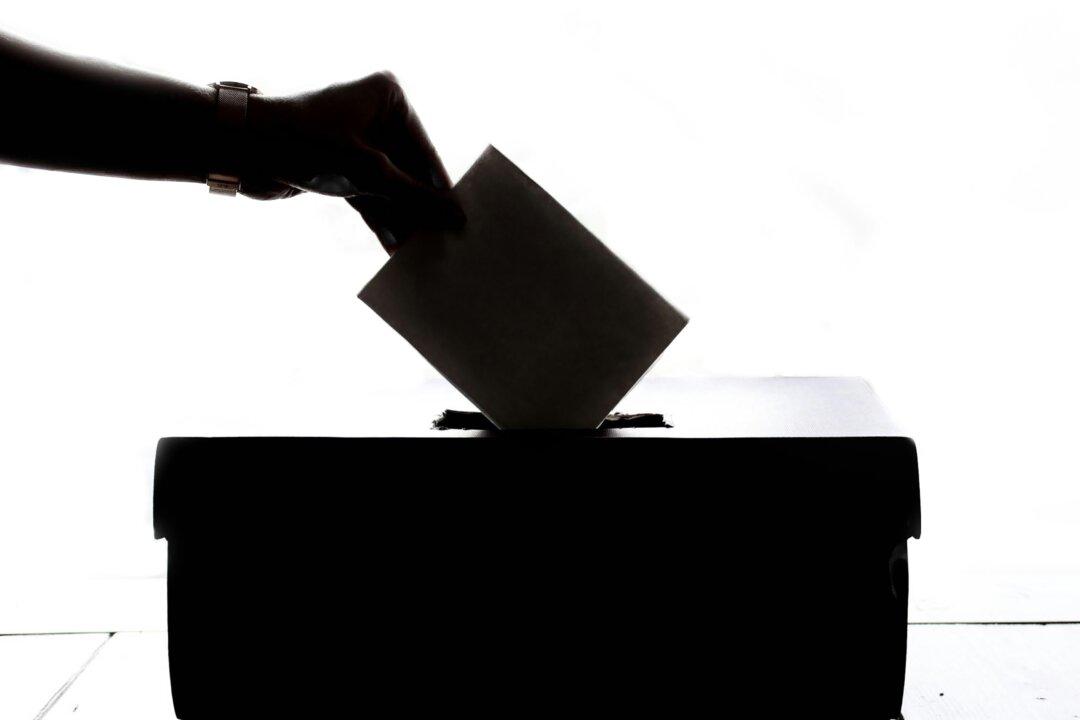Commentary
It appears as if the Chinese Communist Party is running the Biden administration’s Environmental Protection Agency (EPA).
The EPA this week is announcing new emissions rules for cars, SUVs, and pickup trucks for the model years 2027 to 2032, and possibly for heavy-duty vehicles, too. According to The New York Times, the rules would require as much as 60 percent of new car purchases to be of electric vehicles (EVs) by 2030 and as much as 67 percent by 2032. One obvious aim here is to make conventional cars so expensive that an ever-increasing number of drivers will be bullied into buying electric, the average sticker price of which is about $18,000 more than gas-powered vehicles.
Beyond the obvious problem that fully charged car batteries run out a few hours into your trip, there is an even more serious underlying problem: the minerals needed to manufacture millions of new batteries for electric cars. The cobalt, graphite, lithium, and nickel that has to be dug—requiring in excess of 300 new mines that do not as yet exist in the world—all have to be processed, refined, and used to construct cathodes and anodes. Where, might you imagine, does some 90 percent of anode production in the world take place? Mainland China.
Even by the end of this decade, North America will fulfill only about 3.5 percent of the cathode and anode manufacture needed for the proposed government-mandated switch to electric personal travel. The United States has a single, solitary lithium mine. This isn’t very consistent with the auto industry’s cringe-worthy efforts at advertising to make EVs seem cool. The so-called Alliance for Automotive Innovation (AAI) lobbying group in Washington, whose members include U.S. and foreign auto manufacturing giants, is in court opposing the efforts of 16 state attorneys general, led by Texas attorney general Ken Paxton, to rein in the EPA in federal court.
The state attorneys general see themselves as fighting back against EPA micromanagement of automobile greenhouse gas emissions, actions which even before this week’s new rules they consider to be far in excess of the federal agency’s authority granted by Congress, and a violation of the U.S. Constitution’s separation of powers. The state attorneys general view the regulations as instruments of the extreme Biden global warming agenda that will strain the electric grid and devastate the states’ energy industry.
Joining the Lone Star State are Alabama, Alaska, Arkansas, Arizona, Indiana, Kentucky, Louisiana, Mississippi, Missouri, Montana, Nebraska, Ohio, Oklahoma, South Carolina, and Utah. California and 21 other left-leaning states are in court on the EPA’s side. AAI member Ford declares it will reach carbon neutrality by 2050, General Motors one-upping that and promising it by 2040. You would never know, as The New York Times admitted last fall, that EVs actually have a larger carbon footprint than gasoline-powered vehicles.
Even if we did turn America’s energy economy upside down to compete with China in manufacturing batteries, we could not match China’s cheap cost of labor—including, reportedly, slave labor in Xinjiang, in the mineral/battery manufacturing supply chain.
It is little short of comical that the only rare earths mine located in the United States, within the Clark mountains in southern California, was revived for the purpose of lessening dependence on China’s near-monopoly on the precious minerals we need in manufacturing sophisticated magnets for everything from EVs to missiles to radars to stealth aircraft to submarines; and yet when its yield emerges from the ground, it is actually sold to refiners in China because Beijing boasts 85 percent of rare-earth processing and 92 percent of magnet production utilizing the minerals. What’s more, Shenghe Resources, which takes the material to Chinese buyers, owns nearly 8 percent of the lone U.S. mining facility.
Transforming the ore into a working magnet is costly and complex, entailing pulverizing, subjecting it to high temperature, separating it, and purifying it, and which cannot all be done within the United States. In fact, the final stage of the process cannot be done within this country at all.
What could be more humiliating and chilling than the Pentagon’s suspension last September of delivery of F-35s after discovery that a cobalt and samarium alloy in magnets of the advanced combat craft’s turbo-machine pumps was produced in China? So much for the Defense Department’s rule urging reliance on American contractors. As of last fall, all of the approximately 600 F-35s delivered to the U.S. military contain Chinese alloy.
Green extremists within the United States are twisted between favoring domestic rare earth availability for EV motors and batteries and their concerns about the negative environmental effects they worry new mines in America will unleash.
It’s bad enough that payments from the state-owned energy company in China, HK Limited, were being handed through a middleman firm to members of President Joe Biden’s family. Even without that arrant corruption, our main adversary, which is committed to American demise, is already in a position of monopolistic dominance in key energy resources as the Biden administration veers the transportation sector even further toward dependence on communist China.





